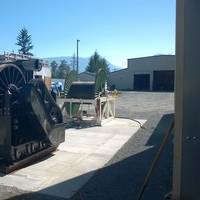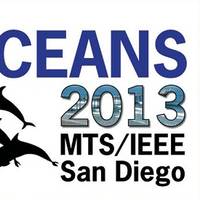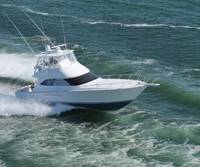SOSI Delivers Mooring Winches; Completes Test Pad

Sound Ocean Systems, Inc. (SOSI) announced the delivery of two unique mooring winches, both tested on its newly constructed test pad at its primary manufacturing facility in Sultan, Wash. SOSI recently delivered two all-electric, custom designed, VFD controlled large mooring winches developed for Oregon State University and the University of Washington. Although configured differently, both the 175 HP OSU Heavy Lift winch and the 75 HP UW Medium Lift winch contained SOSI’s continuous position sensing level wind system. The Heavy Lift Winch is capable of deploying or recovering 25,000 lbs.
Oceans '13 MTS/IEEE San Diego Preview

Heeding the call to join “An Ocean in Common,” authors flooded the Oceans ‘13 MTS/IEEE San Diego technical program committee with a record number of abstracts in a single day. Special topics include an Ultra-deep track discussing current and prospective robotic technologies, plus a panel of scientists to consider research questions. Oceans2013 Chair Bob Wernli, and Co-Chair Kevin Hardy, developer of the unmanned landers for James Cameron’s DeepSea Challenge Expedition, will be the session conveners. “James’ intention is to be certain the door remains open to other explorers,” Hardy said.
Dr. Henry Chen Chief Naval Architect, Jeppesen

The term “Fleet Optimization” means many things to many people. What does it mean to you? Dr. Chen Fleet Optimization encompasses many aspects of shipping operations ranging from finding the best deployments and schedules for maximizing the fleet revenue/profit to minimizing total fuel consumption on a particular passage given the loading conditions and forecast weather to arrive on-time. Historically, such decisions are derived from years of experiences with hit or miss results.
ZF Marine LLC takes delivery of ZF POD 4000 demonstration vessel

ZF Marine has taken delivery of a new 50 foot Viking Sportfishing yacht. The purpose of this vessel will be to demonstrate the ZF POD 4000 propulsion system. The vessel is equipped with two Caterpillar C18 engines each producing 1150 bhp. These engines are mated to ZF 500 series transmissions, which are connected to the POD units via Centa carbon fiber driveshafts. The ZF POD 4000 drives are the highest rated propulsion pods in the market today, rated to 1200 bhp. Control for the ZF POD 4000 comes from ZF Marine’s well established SmartCommand control system…
Lockheed Martin Awarded $35.8m Navy Contract
Lockheed Martin has been awarded a $35.8m contract by the U.S. Navy to design and produce antenna buoy systems that will expand the communications capabilities of submarines while they are submerged. The Navy's Communications at Speed and Depth (CSD) program will use expendable submarine and air-launched communications buoys to enable submarines operating below periscope depth and at tactical speeds to communicate with surface ships and land-based assets via satellite networks. All classes of U.S. Navy submarines will be equipped with this capability. Under the contract, a Lockheed Martin-led industry team will develop three types of expendable communications buoys: two submarine-launched tethered buoys that provide real-time chat…
Deep Ocean Engineering Receives NASA SBIR Phase II Award
NASA recently selected Deep Ocean Engineering, Inc. (DOE) in San Leandro, Ca., as the recipient of a Phase II contract in its Small Business Innovation Research (SBIR) Program. The award has a total value of $600,000 and duration of 24 months. The project involves research and development of a versatile apparatus and method for remote robot mobility. Bruce Caldwell, DOE’s Director of Engineering, is the project’s Principal Investigator. Key consultants include Dr. Phil Ballou at Ocean Systems Inc., and Edge Innovations, both located in Alameda, Ca. Robotics intended for exploration of extremely remote and harsh environments must be extraordinarily versatile as well as robust. They must be able to perform in and adapt to unknown and highly variable physical surroundings.





